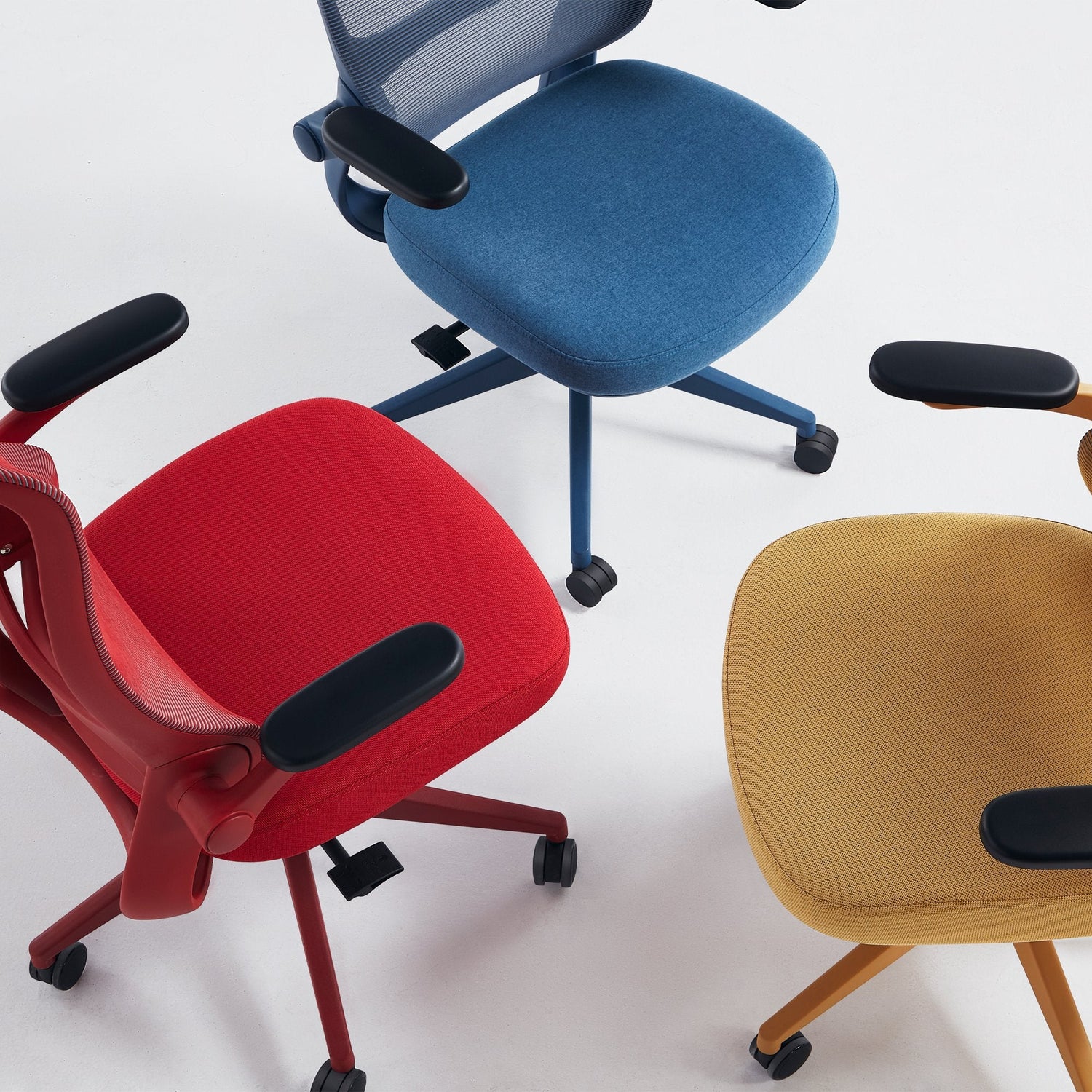
All Products
Explore the full range of Sunaofe's ergonomic office furniture, crafted to enhance...

Explore the full range of Sunaofe's ergonomic office furniture, crafted to enhance...
30-Day Money Back + Seel Insured
Eco & Ergo! Exclusive Design
Save 10% Now! Code: Sunaofe25
Whether it is leather office chairs or sofas, it can be hard to determine the differences between genuine leather and faux leather by eye. When the budget is limited, high-quality artificial leather is the preferred choice. But what exactly is artificial leather? Are all types of faux leather good?
Faux leather, also called artificial leather, is divided into PVC, PE, and PU leather according to the materials. The advantages of faux leather include cost-effectiveness, excellent waterproofing, a well-groomed border, high durability, and high customization. PU leather is an artificial leather with the highest cost-effectiveness, which is also a special type of faux leather.
PU refers to Polyurethane, the plastic polymer used as the coating. The method of manufacturing PU leather involves coating a fabric backing with a layer of polyurethane. This layer can be applied in various thicknesses and embossed with different grain patterns (like cowhide, ostrich, etc.) to mimic real leather. Compared with PVC leather, PU leather has a more realistic feel and is less toxic.
In the market, artificial leather has below types:
Here's a detailed comparison of PU Leather vs. Real Leather, highlighting key differences in materials, properties, cost, maintenance, and ethics:
PU leather is a synthetic material; the surface grain is embossed artificially to mimic real leather. Real leather is always made from treated animal hides (cow, goat, lamb, etc.) through tanning, retaining the natural grain and imperfections of the hide. Therefore, PU leather is cheaper than real leather.
For initial softness, PU leather often feels softer and more pliable right out of the box than some new real leathers. But less supple over time. Oppositely, the softness of genuine leather will improve with age and even produce patinas.
Unlike real leather, PU leather has lower breathability and is prone to cracking or peeling after 5 years. Some inferior PU leather may not last for more than a year.
Unlike PU leather, which is easy to clean, real leather requires conditioning and oiling regularly.
100% PU leather is plastic-based, which is non-biodegradable. However, this also demonstrates that it is vegan.
If low cost, vegan ethics, and initial look are top priorities, PU leather (100% PU) can be a good option. If longevity, durability, and natural materials matter most, invest in genuine leather.
PU leather is designed to mimic genuine leather's look and feel while being more affordable and vegan-friendly. Here's a breakdown of its types and key aspects.
Generally, 100% PU leather is more flexible, breathable, and environmentally friendly than PVC leather. Feels softer and closer to real leather. It is commonly used in apparel (jackets, skirts, bags), shoes, upholstery, and accessories. It is the most durable among other artificial leathers.
Bicast leather uses a real leather base, but specifically the fibrous, lower-quality "split" layer left after the top-grain is separated. This split leather is heavily sanded, then coated with a thick layer of polyurethane and embossed. It has a very uniform, plastic-like surface.
However, bicast leather is less breathable and flexible than 100% PU leather. Prone to cracking and peeling over time as the PU layer separates from the weak leather base. It is applied to lower-cost furniture, book bindings, and low-end accessories.
Bonded leather is the least durable "leather" product, made from shredded leather fibers and dust (leftover from leather production) bonded together with latex or PU binders onto a fabric backing.
The surface is coated with a thin layer of polyurethane and embossed. Due to its thin layer, it tends to flake or peel off relatively quickly, revealing the unattractive fibrous base. You can see it on desk accessories or book covers.
While purchasing, you may think, “Is PU leather good or not?” Whether PU leather is "good" depends entirely on your priorities, budget, and intended use. It's not universally good or bad – it has significant advantages and disadvantages compared to genuine leather and other materials.
PU leather is generally softer, more flexible, more breathable, and considered more eco-friendly than the older PVC type. When shopping, if something is labeled just "faux leather," it could be PU or PVC (or another type). Ask the seller if you want to know specifically.
In addition, it must avoid confusion PU leather with "Bicast Leather", which is real leather (often split leather) that has been coated with a layer of PU or PVC to give it a uniform, plastic-like surface. It's a hybrid, not pure faux leather.
Be the first to know about new collections and exclusive offers.
